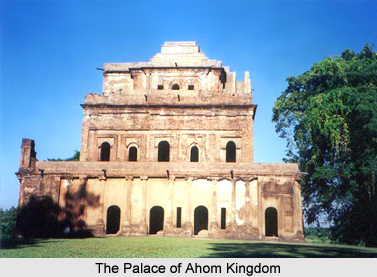 History of Papum Pare district in Arunachal Pradesh actually emerges from some vague traditions that were predominant in the late medieval period. The ancient period history of this district is insufficient and fragmentary to give a connected historical account. The archaeological relics of later times that were discovered in the area do not provide any key to the ancient period of history of Papum Pare district.
History of Papum Pare district in Arunachal Pradesh actually emerges from some vague traditions that were predominant in the late medieval period. The ancient period history of this district is insufficient and fragmentary to give a connected historical account. The archaeological relics of later times that were discovered in the area do not provide any key to the ancient period of history of Papum Pare district.
It is in the late medieval period, which was marked by the dominance of the Ahoms in the Assam that the history of the area materializes. A series of precious chronicles known as `Ahom Buranjis`, of the Ahoms who ruled Assam for six centuries from 1228 A.D to 1826 A.D, bear the significant literary facts that suggest the historical developments of Papum Pare district. During the rule of Ahom dynasty the Nishing tribe did not pay taxes to the King of Assam but they accepted his rule and obeyed some of his commands.
Further, during the rule of Ahom King Sukhampha, Khora Raja (1552 AD-1603 AD) the area covered by Papum Pare district was brought under the Ahom administration. In 1614 the Ahom expedition in this area ended in a total defeat of the Ahoms. The Nishis were given the right to receive payments from certain specified villages in the foothills, provided they paid annual tribute to the king. Katakis were appointed for this purpose. Moreover, the Nishis were entitled to receive from every ten houses at foothills, one double cloth, one single cloth, one handkerchief, ten heads of horned cattle and four seers of salt. However, the Nishis could not be prevented from committing raids in the plains of Assam. In 1646, during the reign of Sutyinpha also called Naria Raja (1644 AD-1648 AD), a disciplinary expedition was sent against the Nishis to avenge the outrages committed by them. The expedition failed and a second expedition was undertaken in 1648 AD. This time also the Ahoms were compelled to retreat.
In 1672 AD, the Nishi rose in revolt and refused to pay tribute to the Ahom King. They raided a village called Taiban in the Lakhimpur district and carried off a number of people. The reigning king Udayaditya Singha dispatched a retaliatory force against the Nishis, ignoring the caution of his Prime Minister. The expedition dragged on for long until it ended in failure. Hostilities between the Ahoms and the Nishis continued until the latter came to the terms during the reign of Rudra Singha (1696 AD-1714 AD), the strong Ahom king. The Nishis agreed to provide 600 soldiers to the Ahom Army. However, the peace did not last long. The Nishis committed a series of raids after the death of King Rudra Sangha. However, the Nishis were subdued in 1717 AD during the reign of King Siva Singha (1714 AD-1744 AD) and King Rajeswar Singha (1751 AD-1769 AD) imposed a blocked on the passes leading to the hills. Consequently, the Nishis led an allocation to the king. However, the arrest of the representatives by the king resulted in hostility until the restoration of the powers to the Nishis.
During the Moamaria rebellion that broke out in Assam in the year 1769 and continued till the early part of the next century, the Nishis made an ordinary cause with the rebels in their bid to over throw the Ahom domination. The rebellion ended quietly. After fall of the Ahoms, the Treaty of Yandabo ceded Assam to the British in the year 1826. The British largely followed the Ahoms about Nishis in the nineteenth century. Consequently, the Nishis stared settling in the plains and got engaged in agriculture. On February 1872, Amtola village, a Nishis village settled in plains near Gohpur was attacked and plundered by two hundred Nishis of the hills. From the early part of the 20th century the relationship between the Nishing tribe and the government took a new turn. In the year 1914 the Papum Pare district was a part of the administrative unit called Western Section of North-East Frontier Tract. In 1919 it was renamed Balipara Frontier Tract. Again in the year 1954 this Tract was divided into two administrative units known as the Subansiri Frontier Division and the Kameng Frontier Division. In 1965, the Subansiri Frontier Division came to be known as the Subansiri District. In 1987 the Subansiri District was bifurcated into Upper Subansiri District and Lower Subansiri District. And in the year 1993, the Papum Pare District was curved out of the Lower Subansiri District.
Thus, the historical accounts of Papum Pare district also suggest some interesting and unknown changes in the formation and development of this area.



















